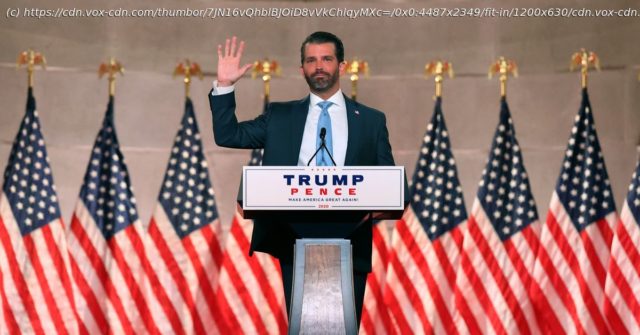The aesthetics of the 2020 RNC are a disaster.
Aesthetically speaking, the first two nights of the Republican National Convention were a disaster. Where the Democratic National Convention leveraged the restrictions of the Covid-19 era to create something approaching entertaining television, the RNC hauled out an endless array of speakers, and nearly every one of them stood behind a podium and spoke in roughly the same cadence and volume as all the rest. Even worse, the camera angles and the visual framing of the programming lacked the kind of variety that might engage viewers on a level beyond, “Look at the people who are talking.” As a case in point, watch this 15-second video clip to see a shot that recurred over and over throughout the convention’s first night: Watching that first night, I was struck by how frequently the shot displayed in this clip popped up. It seemed as if every single speech featured one or two moments where the camera pulled back in a graceful arc, receding from the speaker for no apparent reason other than to look kind of impressive. The first time it happened, I was kind of taken with the scope of it, perhaps because so much of the start of the convention had been drab and lifeless. The third time it happened, I wondered if the Republican Party only owns three cameras and was deeply committed to using one in this extremely particular way. By the end of the night, I was as numb to this shot as the handful of others deployed throughout. The camera angle most often used to film speakers was an unflattering, head-on shot that flooded them in a garish pool of bright, white light. The lighting was also more flattering to lighter skin than darker skin. Watch the speech from South Carolina Sen. Tim Scott and notice how much harder it is to read his facial expressions when the camera cuts out to a wider shot from the closeup it’s usually situated in. Now, watch the speech from Donald Trump, Jr. to see just how readable his expressions are from a wide shot. The DNC often used similar camera setups to present its many speeches. But in those cases, the setting of the speeches, frequently carried from party members’ homes, was varied enough to make them feel incredibly different from one another. And some of the DNC speeches benefited from genuinely intriguing filmmaking choices. Barack Obama’s speech was mostly filmed in a single shot of the former president that slowly zoomed in on his face as he spoke, beginning in a wide shot that suggested the sweep of history (surrounded by icons of the American Revolution as he was) and ending in a close-up that allowed for greater intimacy.






